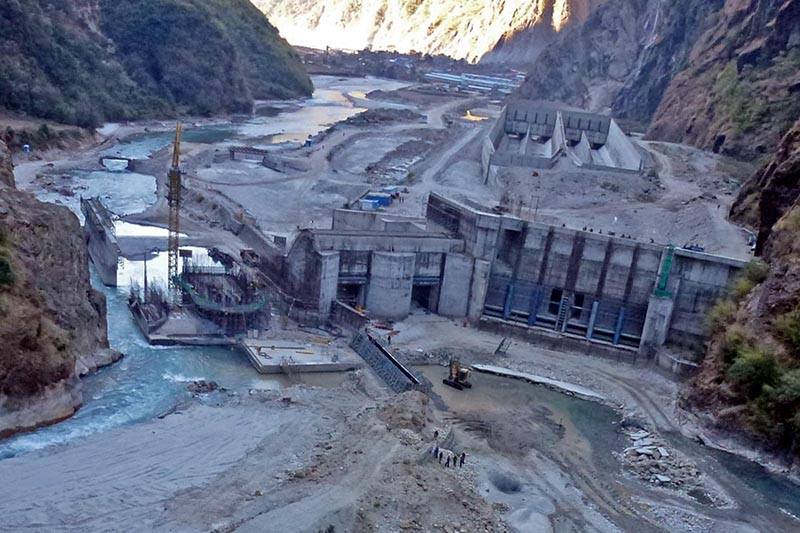After five years since its initiation, the headrace tunnel of the Upper Tamakoshi Hydroelectric Project (UTHEP) has been completed. The headrace tunnel is a major part of the hydropower project as it connects the reservoir to the power station.

With this, 92% of the total work of the project is completed. Bigyan Shrestha, project chief of UTHEP said, “The completion of headrace tunnel is a major achievement for any hydroelectric project and we’ll be able to commission power after 10 months.”
The Upper Tamakoshi Hydroelectric Project started in 2011 and according to the previous plan, the project was supposed to be completed by mid-July 2016. The construction was delayed a few months and started only in August, 2012. Then the location of the project, Dolakha, was badly affected by the devastating earthquake of April 2015. And the project was further delayed for one and a half years.
According to Ganesh Neupane, spokesperson for the project, the earthquake did not damage the tunnel, but it did damage the access road significantly. This was followed by trade disruptions in the southern plains of the country which further delayed the project for almost two years.
After the completion of the tunnel, the UTHEP now has a tunnel of length 8.4 Km. This is the longest tunnel amongst all hydropower projects that have been constructed till date. UTHEP generates a power of 456-megawatt. It has the largest capacity among all hydropower projects in the country constructed though the country’s own resources.
The project is being constructed by Chinese contractor, Sino Hydro. It is being financed by Nepal Electricity Authority (NEA). NEA itself has 41% stake in Upper Tamakoshi Hydropower Ltd. Other shareholdes are Citizen Investment Trust (2%), Rastriya Beema Sansthan (2%), Nepal Telecom (6%), public (15%t), locals of Dolakha (10%), depositors of Employees Provident Fund and employees of NT, RBS, CIT and EPF (24%).
Ganesh Neupane further informed that the project was estimated to cost Rs. 35 billion but Rs. 38.83 billion has already been spent. So the final project cost is expected to be around Rs 42 billion.
-
Realme C63 with 50MP Camera Now Available in NepalHIGHLIGHTS The Realme C63 price in Nepal is Rs. 15,999 (4/128GB). It is powered by…
-
Yamaha MT-15 Version 2.0 Expected to Launch Soon in Nepal: Find Out What’s NewHIGHLIGHTS Yamaha MT 15 V2 price in Nepal is expected to be around Rs. 6…
-
Yamaha Aerox Review: Fast and Fun with R15 at Heart!TechLekh Verdict Yamaha Aerox 155 is an outstanding scooter that combines power, style, and advanced…

















